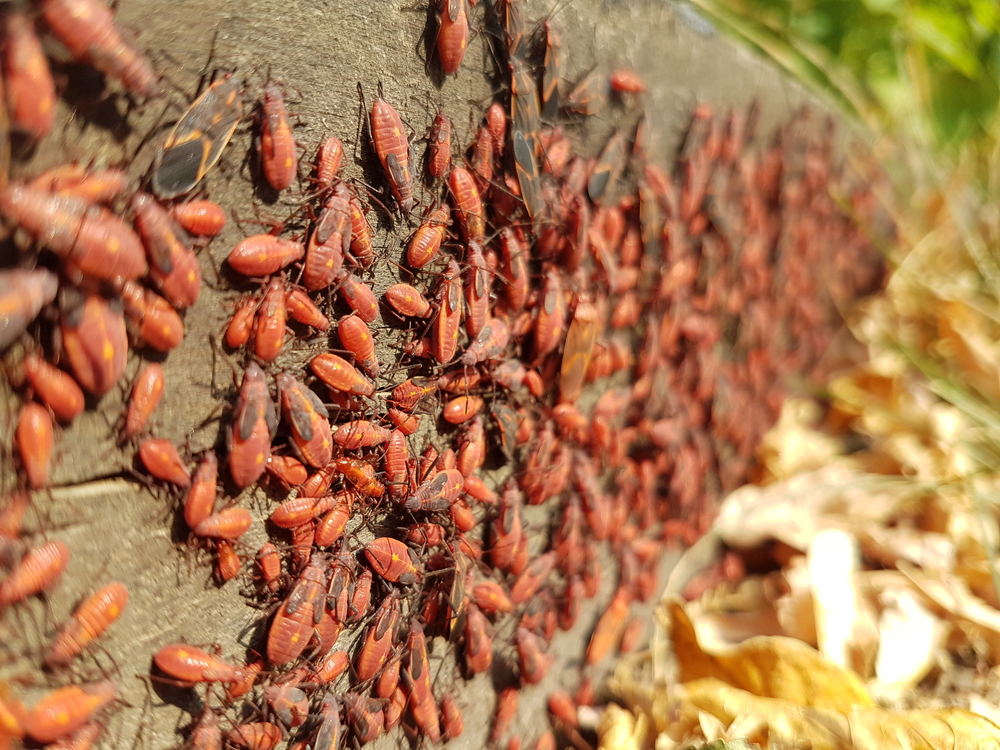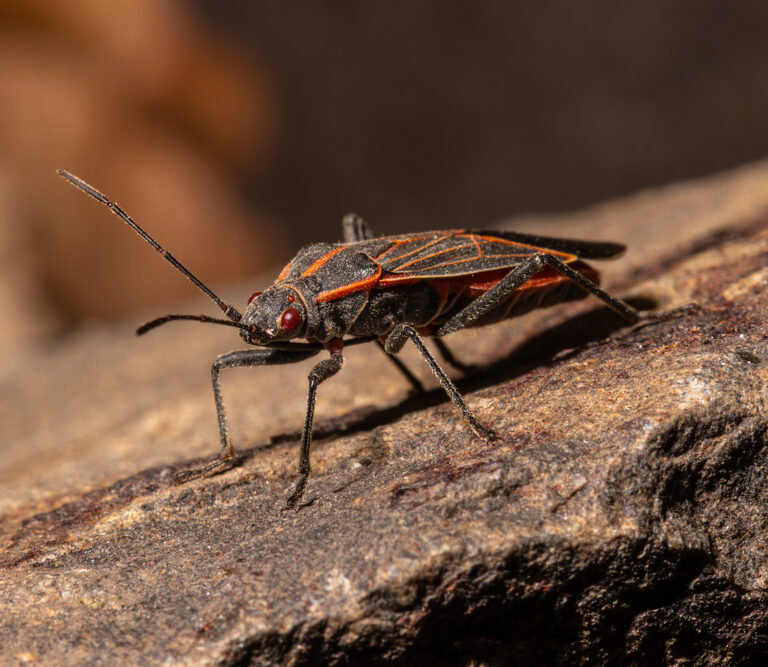If you were desperate enough to proactively search for this article, then you must be facing quite a predicament—hundreds upon hundreds of half-inch long, red-winged predicaments, to be exact.
A swarm of boxelder bugs invading your home can be a serious nuisance, especially if they return season after season. But it’s not only that; they can also do real damage.
Boxelder bugs can destroy clothing, curtains, and carpets with their excrement. They can also damage your electronics and cause malfunctions if they happen to get stuck on the interior of your devices. More than anything, it’s just not cool to have swarms of crawlies hanging out in your basement.
Suffice it to say, boxelder bugs are a huge pain. Luckily for you, this article contains smart and easy tips to permanently get rid of boxelder bugs from your dwelling.
What Are Boxelder Bugs?
Before we proceed to the meat of the discussion, it’s important to learn some basic information about these bugs, such as how they look, how they differ from similar-looking insects, and what their most common habits are. Knowing this info will help in your quest to get rid of them and prevent them from coming back in the future.
If you’d prefer to get right into our removal tips, you can click here to head straight over to that section.
Boxelder bugs get their name from one of their favorite trees to munch on, a maple variety of the same name that is endemic to North America. These critters can be found spread over a wide area throughout the entire continent but are more prevalent in eastern Canada, Nevada, and throughout the east of the US.
Physical Appearance
Boxelder bugs have distinctive colorations, with mostly-black bodies accentuated with orange or red on their sides and the edges of their wings. They have a flattened, oval-shaped body and antennae roughly half their length.
Although they share some physical similarities with stink bugs, telling them apart is quite easy if you know where to look.
Both bugs are oval-shaped and flattened, but a stink bug’s body has more angular dimensions and looks more like a shield, in contrast to the boxelder bug’s more rounded shape. And although stink bugs do come in a variety of colors, such as brown, black, and gray, they don’t sport orange or red highlights like the boxelder bugs.
Behavior
Adult boxelder bugs come out of their hibernation between March and April, which is also the season when boxelder tree buds begin to bloom.
During these warmer months, adult bugs leave their winter areas and return to the trees where they were born. Their first goal is to seek nourishment, feeding on boxelder seeds on the ground. When those run out, they go to female maple or boxelder trees, where they eat new leaves shooting out of the branches.
This is also the ideal breeding time for boxelder bugs. Females lay their light-yellow eggs outdoors, on anywhere from shrubs to rocks. Boxelder nymphs have a yellow coloration and don’t have wings.
As these insects hibernate in the winter, they must find a warm and cozy dwelling during this time. This is why they congregate en masse in your house. They will seek out small crevices in the walls or cracks in the foundation that will insulate them from the cold winter as they sleep.
How to Get Rid of Boxelder Bugs for Good
This section will discuss the ways to permanently remove boxelder bugs from your dwelling.
Take note that the ideal season to remove boxelder bugs is in the summer, when all adults have already left their overwintering spot to find warmth in the crevices of your walls.
Before we start, here’s another pro-tip: No matter what you do, never kill boxelder bugs in places where you can’t clean them up. Doing so could attract other insects that eat dead bugs, such as dermestid beetles.
Now, without further ado, here’s how to get rid of boxelder bugs.

1. Clear Indoors First
The largest and arguably most annoying damage that these bugs can do is inside your dwelling. Boxelder bugs can get into machines, foul up the place with their insect smell, and potentially destroy clothing, carpets, and curtains, among many other items.
It’s of primary importance that you secure the interior of your home first because even if you obliterate the bugs outside, more of them could be hiding inside your house. Focusing solely on the outside would make your efforts useless once the next season comes and they come out of their hiding spots.
You can employ a variety of methods to remove boxelder bugs from inside your house – as long as you don’t kill them. As mentioned above, killing them would attract scavenger insects, and you’re going to end up with more problems, not less.
Sweep Them Up
One of the most efficient ways to get rid of these bugs is to simply sweep them all up. Boxelder bugs sometimes congregate on visible areas of your house, such as the floor of a basement or the walls of a shed.
Use a long-handled broom and sweep the insects quickly into a good-quality trash bag. Although they’re fast and agile fliers, you’ll still get enough time where the insects will be too disoriented to escape. Make sure you seal the bag before they take flight.
Vacuum Nooks and Crannies
For areas where you can’t use your long broom, it’s best to use a reliable vacuum cleaner. A vacuum cleaner can suck out the bugs even if they’re hiding in cracks in the walls. Once again, avoid killing the bugs to minimize the chances of infestation from other insects.
When vacuuming, make sure to seal the bags as quickly as you can after you turn the vacuum off. This will prevent the bugs from flying away and escaping.
Trap the Remaining Bugs
If you believe that there are still more bugs around, but you can’t find them, consider laying traps around. Glue or light-based insect traps will attract and capture boxelder bugs even without you watching over them. You should leave them in out-of-the-way places in your home, such as attics, ceilings, or basements.
2. Eliminate Them Outdoors
Now that you’ve gotten rid of the boxelder bugs inside your house, you should do your best to eliminate them outside as well. Doing so will limit their overall numbers and further decrease the chances of them swarming up your house again come next winter.
Spray Them With High-Pressure Water
Clusters of bugs can easily be broken up by a stream of water from a pressurized garden hose. Although this won’t reduce their population, frequently breaking up swarms of bugs will slow down the growth of their swarm by preventing them from breeding.
Use Diatomaceous Earth
Diatomaceous earth is made out of fossilized remains of algae. This substance is lethal to boxelder bugs, penetrating their exoskeletons and killing them after several hours. Luckily, while lethal to boxelder bugs, it’s fairly harmless to humans.
That said, you should still use gloves, masks, and goggles when using diatomaceous earth. Although the substance itself won’t harm you, its dust-like form can cause silicosis, a common disease that occurs in the presence of large amounts of silica dust.
To use diatomaceous earth, just spread it around a medium to large-sized swarm using a plastic scoop. You can also sprinkle a large amount of earth around their favorite spots, like cracks in the wall and ceiling. This also includes the perimeter of your house, especially on areas of entry like doors and windowsills.
Repeat the process until the bugs are gone. You should also reapply whenever it rains, as the water could wash the powder away.
Use Insecticide
We don’t want to get into the habit of using chemicals to solve our problems, but when facing an overwhelmingly large swarm of boxelder bugs, the chemical solution often is the only solution.
When going down this route, use a pyrethrin-based insecticide to kill boxelder bugs. There are also perimeter formulas that are designed to prevent bugs from getting into your home by emphasizing protection on entry points.
If the swarm isn’t all that large, you can also opt for the DIY method. Mix two tablespoons of dishwashing liquid to one cup of water and use this solution instead of the chemical alternative.
Whatever your choice of chemical is, make sure that you’re following basic safety protocols. Wear safety gloves, glasses, and masks. Keep pets and other people away from newly-sprayed areas.
Once the bugs have dropped dead, clean up and dispose of their corpses properly to avoid the stench of decay. Finally, and perhaps most importantly, never use chemical insecticide indoors.
How to Prevent the Return of Boxelder Bugs
Now that you’ve made sure that there aren’t any insects inside your home and you’ve done your best to eradicate them outside, you can begin taking steps to deter them from coming back to your area again.
Insect-Proof Your Home
Boxelder bugs need a way to get into the cozy spots of your house or shed to be able to infest your home. Therefore, sealing these entry points is the best way to ensure that they can’t get back in again.
Repair cracks in the wall, apply screens to your windows and ventilation openings, and check that your doors and windows all close tightly. Boxelder bugs tend to flock on the sunny side of your house to warm themselves up as the surroundings get cold, so that area should be your main focus.
If the bugs can’t find shelter anywhere near you, then they won’t have a choice but to move on to the next possible house in search of their winter home.
Remove Their Favorite Dwelling
Granted, this is probably one of the most extreme measures you can take in your fight against these bugs. It won’t guarantee 100% deterrence either, since boxelder bugs can fly quite far in search of food.
However, removing boxelder or maple trees near your home will surely slow down the population explosion. If your entire community has an infestation, you can organize a community-wide drive to remove and replace the boxelder and maple trees with other tree species.
Once again, these are drastic measures that may cause some repercussions to the environment. Consult with relevant local authorities to determine if the risk is worth the gain.
Final Thoughts
Although boxelder bugs don’t pose a grave danger to you or to the health of your environment, they can pose a serious nuisance to your daily life, especially if they infest your home. You should make sure that you get rid of the bugs from the inside, reduce their population outside, and then deter them from coming back to your area.
If you followed the methods that we’ve discussed (and in their proper order), then you’re well on your way to winning the battle against these bugs.
